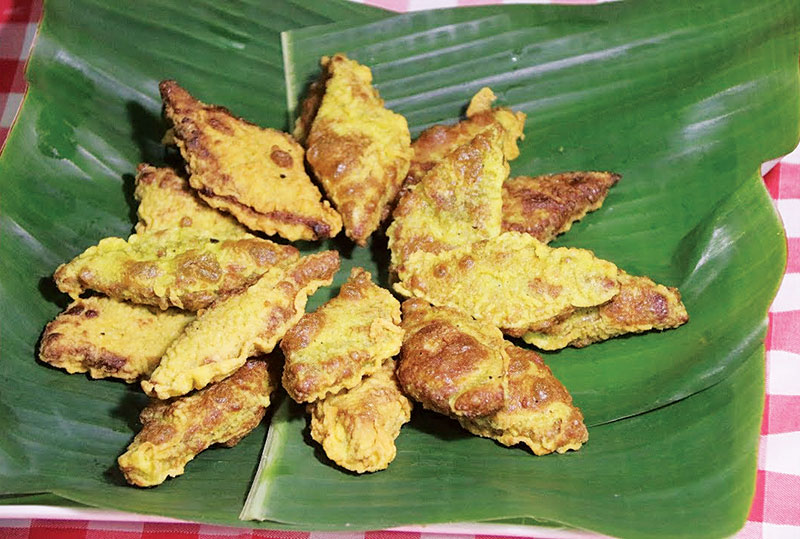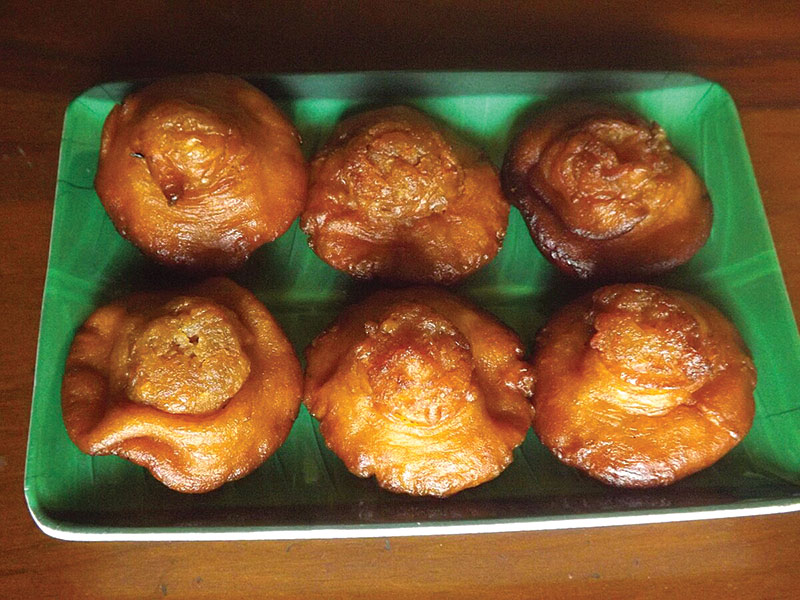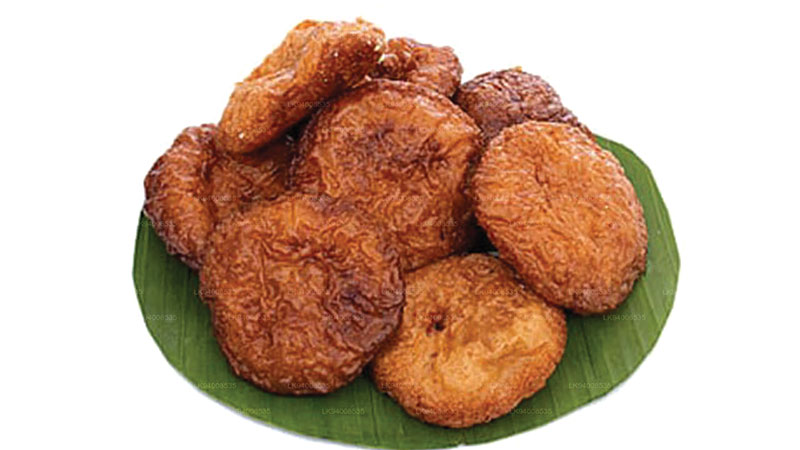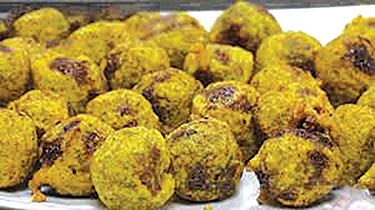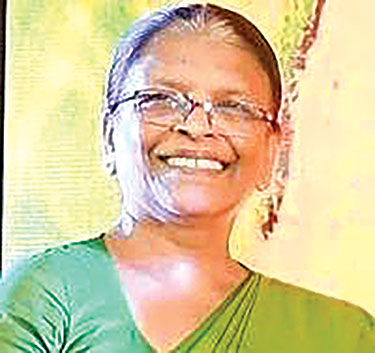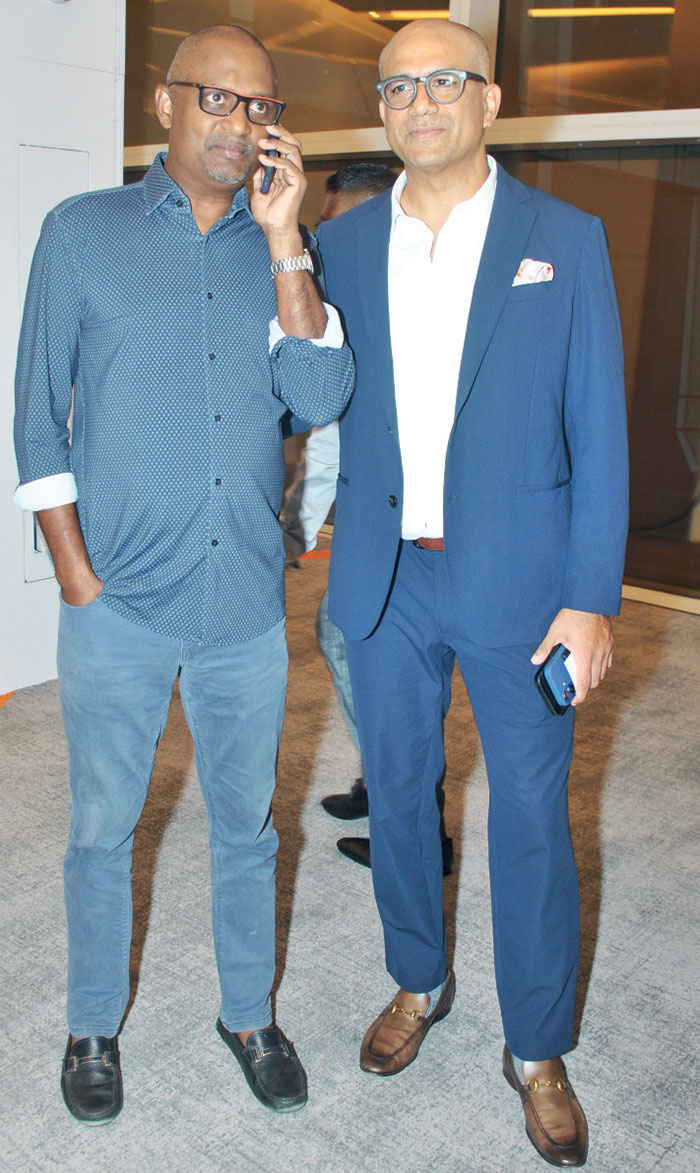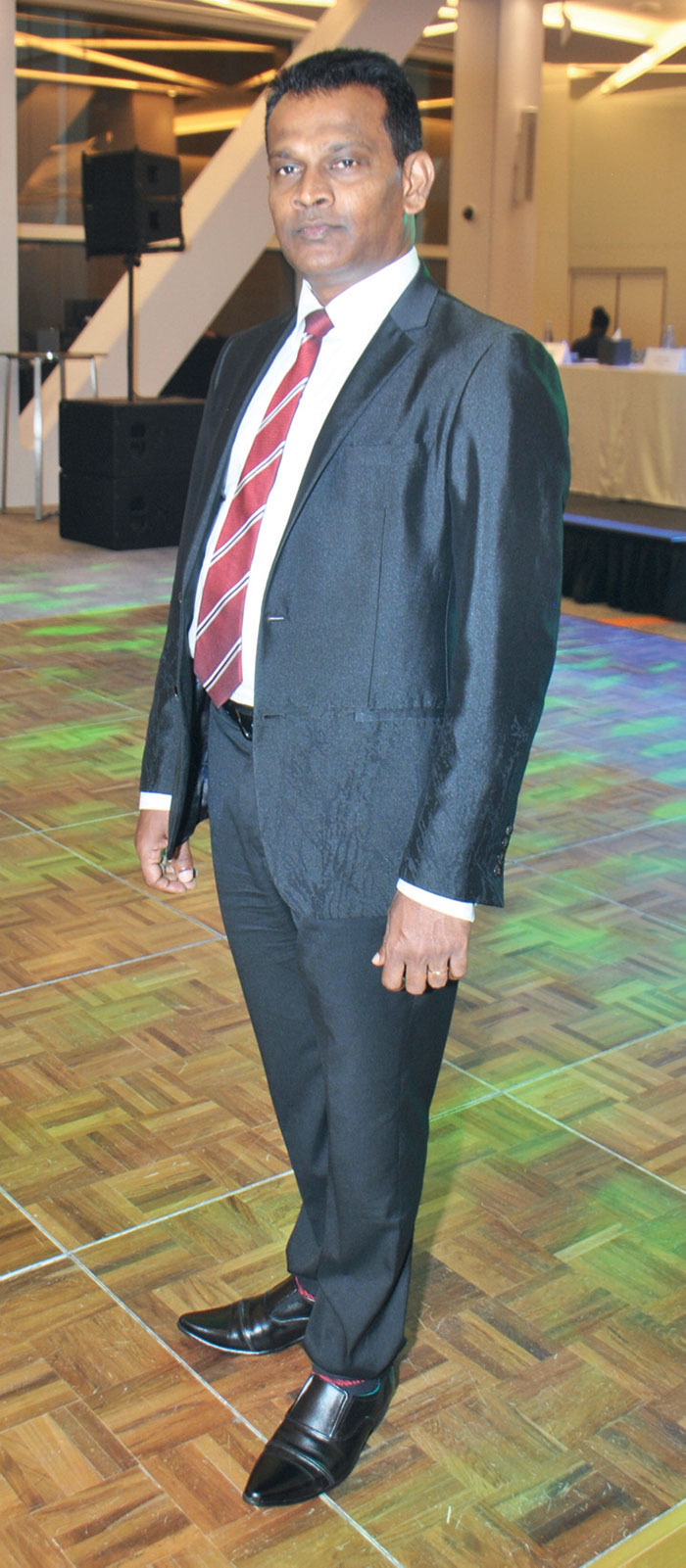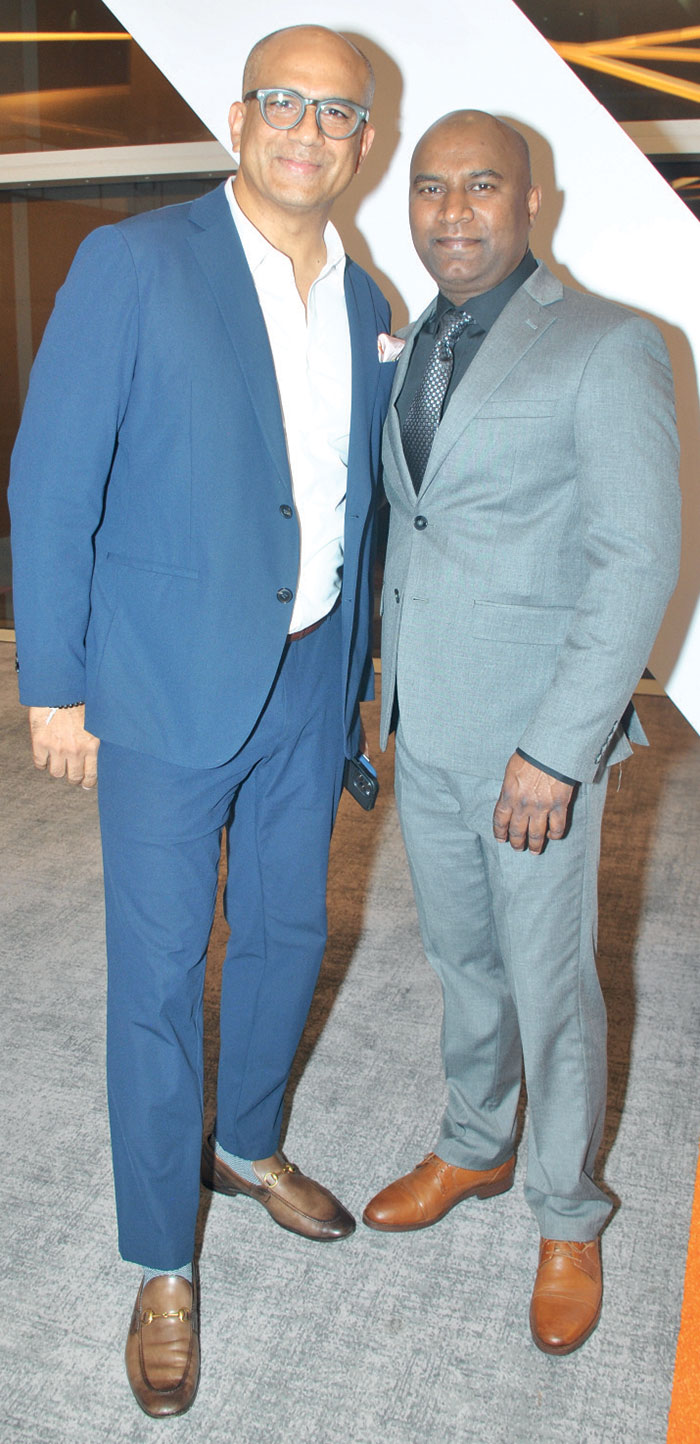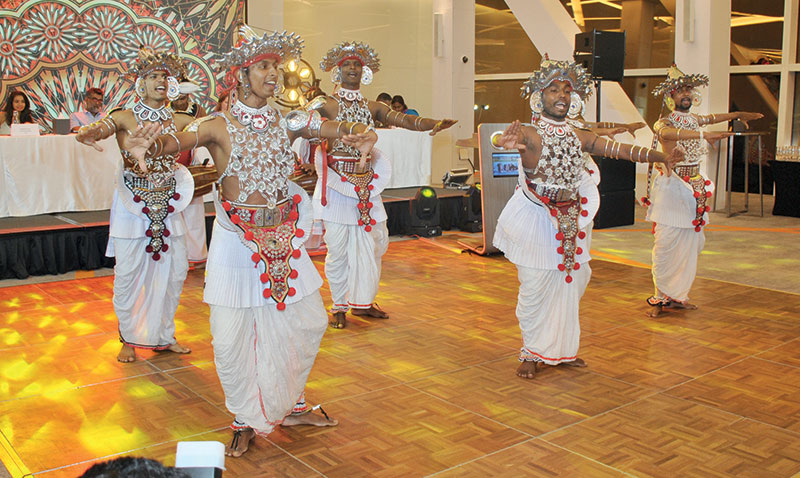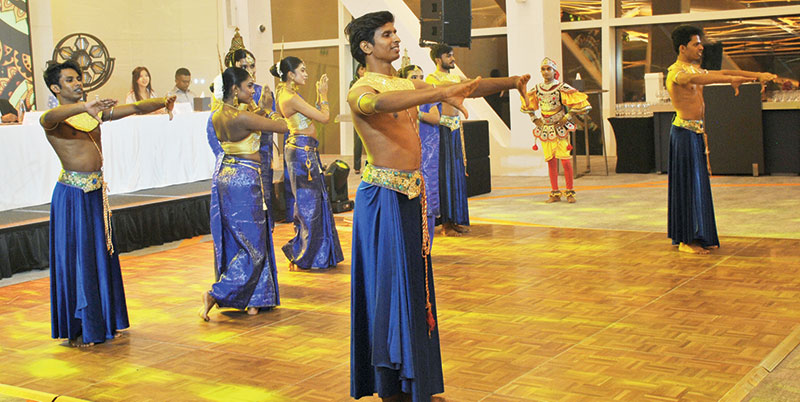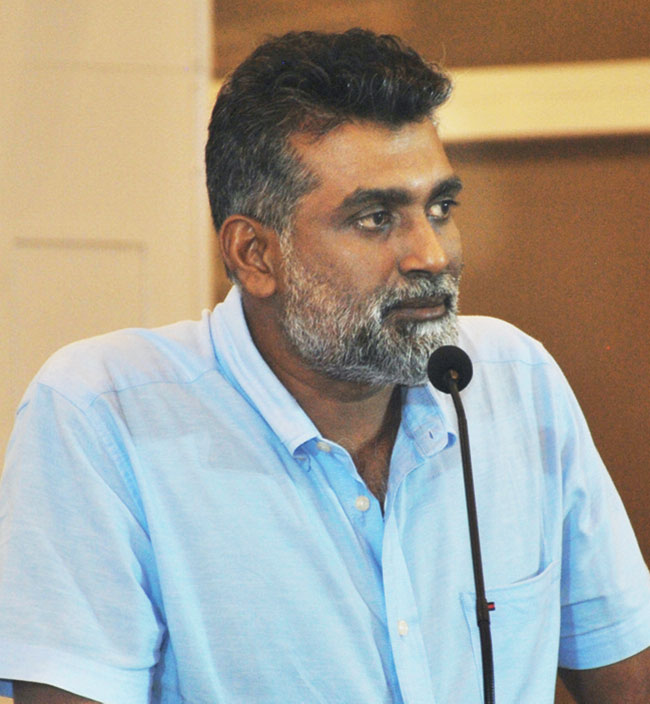Life style
Koreans who visit Sri Lanka don’t want to leave says Ambassador Miyon Lee

Ambassador of the Republic of Korea in Sri Lanka Miyon Lee shares her story on how determination, hard work and a sense of duty for her country helped her achieve her goals . Throughout her illustrious career. Ambassador Miyon, has been a steadfast advocate for peace, pushing for stronger economic and cultural ties between countries she serves facilitating diplomacy.
Affable,charming and proud to be in Sri Lanka, she is dedicated to strengthening the diplomatic relationship between Sri Lanka and South Korea focusing on enhancing cooperation in trade,commerce and culture.
She brings a common touch to each interaction,expressing an genuine interest in each person she spoke about the shared values between Sri Lanka and South Korea
Her first impression of Sri Lanka is that it is a beautiful country. However, the true beauty of Sri Lanka lies in its people, she said. Despite the countries being thousands of miles apart, Sri Lankan’s rich legacy provides a perfect reason for admiration.
By Zanita Careem
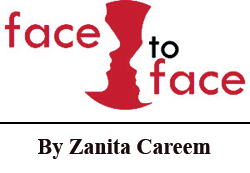 What is your single biggest factor in your success~ what was your most difficult obstacle?
What is your single biggest factor in your success~ what was your most difficult obstacle?
I have been working as a career diplomat for the past 31 years since 1993, and became ambassador to Sri Lanka last year in June. I’m very much indebted to the support and prayer of my family for being able to represent my country. Without the support from my parents, husband and children, I would not have been able to keep up with this challenging work.
Likewise, the biggest obstacle in pursuing this career has been balancing work and family life, especially because you have to make sure your children adapt well to new schools, friends and languages. Growing up as a diplomatic kid myself, I understand how much they have to endure to cope with the new environment.
My career path has been concentrated on economic diplomacy – participating in bilateral and multilateral trade negotiations such as FTA, OECD, APEC and WTO. Being able to participate in the making of trade policies and execute economic diplomacy to eliminate trade and investment barriers for our companies has been the most rewarding work, because you can see concrete outcome – of course the impact could be harsh when you are dealing with sudden imposition of trade restrictions or supply chain disruptions.
The importance of economic diplomacy will further rise as the world meets increasing challenges from geo-economic fragmentations.
As a woman how do you plan to advance basic rights of woman?
I was the only female out of 30 in my batch, and the 10th female to pass the higher Foreign Service exam. Given the small number of women, there was a strong bond of sisterhood, and as mentors and mentees, we tried to encourage each other to adjust to the male-dominated working environment and exchange tips on how to manage private lives. Now women take more than majority of the new recruits, but it does not mean they face less obstacles in work. I follow the footsteps of my seniors and mentors to help my junior colleagues adjust well in their jobs.
Despite the efforts to increase gender equality in women workforce through laws and civil activities, Korea’s wage disparity still remains wide, women participation in the legislative body and high-level administrative positions needs further improvement, and women remain vulnerable against hate crimes and sexual harassments.
The challenge is how to well reflect gender equality when planning projects, organize meetings, and manage offices. For this we need men’s full support and understanding as well, because we can be whole with men and women working in harmony.
Why are women important in the future of effective diplomacy?
I always boast of women’s multi-tasking capacity, developed from juggling various tasks simultaneously in the workforce and at home. Women’s presence in every aspect and fields of diplomacy gives balance and added efficiency from accelerated communications, comprehensive understandings, and inclusive decision making, in addition to colorful and positive vibes.
I envy a strong presence of women leadership in Sri Lanka’s Foreign Ministry with experiences as Ambassadors and high-level positions, and look forward to their greater contributions to Sri Lanka’s Diplomacy. I also celebrate the appointment of Prime Minister Haruni Amarasuriya and wish for her successful tenure.
Throughout your career, no doubt you’ve met many influential people?
I was fortunate to attend policy making process presided by the President or bilateral or multilateral summits, and watch first-hand the speeches and attitudes of world leaders. I realized then that the greatest virtue of the true leaders was humility and empathy generously shown to the people around you. Experts call it “confident humility.”
Who intrigued you the most and why?
One of the most powerful women leaders I met was Dr Ngozi Okonjo-Iweala, during the election campaign for the WTO Director-General in 2020. A Nigerian-American economist, she has been known as a global finance expert, economist and international development professional with 40 years of experience working around the globe. She is also famous for her Nigerian traditional dresses. However, she was not a “trade expert” from the Geneva perspective, and regarded misfit for the job. However, she showed her brilliance in absorbing complex trade issues with her in-depth experiences, intellectual power, injecting new perspectives with vigor. She became the first woman and African to head the WTO. I was then campaigning for our Korean Trade Minister.
What do you think has been the most memorable day or event of your career?
There are times when you face challenges and difficulties that you cannot find solution, feeling helpless. In addition to securing the safety of your people, Korean diplomats also have the responsibility to ensure safe transport of North Korean defectors to Korea. There was one occasion where I had to help release three North Korean teenagers caught by the local police and jailed, and safely transport them to Korea. There was another occasion where a group of women were jailed for months. Sometimes, I would wonder whether they have all happily adjusted to the new life in Korea.
Have you been harassed or discriminated against?
Korean officers at every level in the foreign ministry and other government organizations are required to receive education on the issue of sexual harassments in the office and how to handle them. The education reminded me of such unpleasant occasions that I put up with.
We are also raised to accept discriminations as social norms or tradition. Women wearing pant suits were once regarded rebellious in the foreign ministry, and I had to argue with my father. Now it sounds very absurd, but there might still be the social norm imposed to women that may give women extra discomfort and discrimination. We should not be afraid of raising voices on the discomfort and gender bias that restrict our freedom of choice.
Are you happy to be in Sri Lanka and have you faced any challenges in maintaining diplomatic relations between South Korea and Sri Lanka?
I barely knew of Sri Lanka, other than the Ceylon tea, and people would ask me about Tamil tigers, Tsunami, Easter Bomb attack, Aragalaya when I said I was posted to Colombo. But Sri Lanka proved to be the hidden pearl of the Indian Ocean, with charming people, beautiful sceneries, and delicious food.
The diplomatic relations between Korea and Sri Lanka are only 47 years, shorter compared to others’, but our friendship has expanded and deepened very fast. I meet people of diverse fields speaking Korean language and interacting with Koreans for business opportunities and cultural exchanges.
Of course, Sri Lanka is still suffering from the series of economic shocks, and I am still struggling to bring back Korean companies who left Sri Lanka to seek preferential investment offers, quality workforce and better logistical locations. Yet I admire the resilience, and the potentials Sri Lanka has shown, and I would like to see the new government establish streamlined rules and regulations to attract foreign investment, activate single window for trade, eliminate trade barriers, and enhance transparency. Korean investors are always ready to come back where businesses can flourish.
Sri Lanka has a long cultural history. Any resemblance between Sri Lanka and South Korea you wish to comment?
The Korean Peninsula is only 1.53 times bigger than Sri Lanka, with 70% mountainous terrain and 30% plains. The Peninsula shares the border with China, but North Korea (DPRK) makes South Korea (ROK) technically an island surrounded by the seas.
Korea’s long history of military and cultural interactions with Continental China, 36 years of colonial rule by Japan, followed by the devastation from three years of the Korean War over ideology and power seems to have played out in semblance to the history of Sri Lanka.
The similarities do not stop here. We are the people of resilience and generosity, with the sense of humor and love for art and partying. We are the perfect match, and that’s why Koreans who come to Sri Lanka don’t want to leave.
Life style
Kevum – Befitting a King
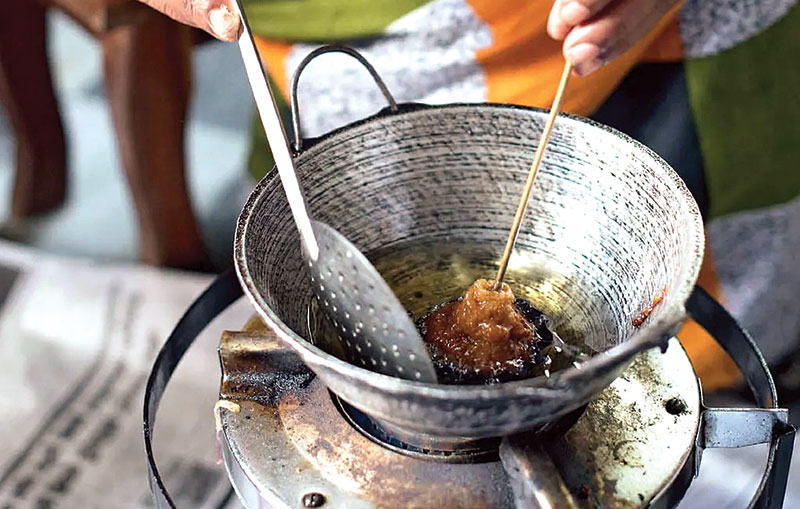
The avurudu table of any Lankan home is complete only when it is laden with kevum. Dating back to ancient times, many types of kevum are chronicled even in our classical texts. The Dutch rulers of the island are said to have relished them, some even asking if they grew on trees… A delicacy which was offered to visiting dignitaries, kevum was revered by our kings even in the battle field not only as an energy-booster but also as a wound disinfectant.
BY RANDIMA ATTYGALLE
The culmination of Avurudu preparations in my childhood with my grandparents was marked by the ritual of Kevum-making. Athamma would ‘book in advance’ the kevum specialist Soida Hami (Soida aachchi to us children), and install a special hearth in her back verendah for the grand moment. I would watch Soida aachchi in wonderment as her thick batter of rice flour and best of kithul treacle shaping into kevums in a hot wok of coconut oil. The long kevum koora in her nimble fingers would achieve the feat of the perfect konde. It was almost a rite of reverence, so much so I was not supposed to talk to her until the first batch of Konda-kevums was completed. Like many old-folk of her vintage, Soida aachchi believed that talking while the first few kevums are done would result in a flawed product.
She would then place each perfect Konda kevuma on a banana leaf for the excess oil to drain. Once the whole exercise was completed, she would place Konda-kevum in large earthen pots and store them in the dum messa or the storage area above the main hearth of the kitchen. She would spare me only one kevuma and the rest had to wait until the auspicious time on avurudu day!
Travellers’ records
Robert Knox an English sailor who was held in captive in the court of the Kandyan King Rajasinghe II and one of the prolific chroniclers of ancient Ceylon in his famous work, An Historical relation of the Island Ceylon documents on the sweet meats of Lankans with a special account of kevum.
‘They have several sorts of sweet-meats. One they call Caown. It is like to a fritter made of Rice-flower and Jaggory. They make them up in little lumps and lay them upon a leaf, and then press them with their thumbs and put them into a frying-pan and fry them in Coker-nut Oyl or Butter. When the Dutch came first to Columba, the King ordered these Caown to be made and sent to them as a royal treat. And they say, the Dutch did so admire them, that they asked if they grew not upon trees, supposing it past the Art of man to make such dainties.’ (Spelling as in the original Knox)
The account of Knox enables rich insights into this wonder of a sweet meat which enthralled many a traveller to the island including dignitaries. The European trader Cosmas who visited Ceylon in 545-550 AD, documents that along with gems, Kevum and Kalu dodol from Ceylon were taken to the Roman court of Emperor Claudius during the sixth century.
- Mun kevum
- Konda kevum
- Athirasa
Classical literature
Kevum dates back to ancient times and our classical texts such as the Ummagga jatakaya, Pujawaliya and Saddharma Ratanawaliya bear evidence to this fact. “Originally known as poopa this sweet meat came to be known as kevum in the Dambadeniya-Kurunegala era. Jathaka atuwa getapadaya mentions 18 kinds of sweet-meats found in the ancient Sri Lanka and among them are several types of kevum such as sendi kevum, mal kevum, athirasa, pena kevum, raa-kevum,” says Prof. Kusumalatha Lankamulla from the Department of Sinhala and Mass Communication at the University of Sri Jayewardenepura.
This scholar with research interest in Culture, Traditional and Modern Literature goes onto note that Mahawamsa in its 32nd chapter refers to two types of kevum in the context of alms offered by King Dutugemunu. The two types- thel kevum and maha de kuvum mentioned, were fried in ghee. “Many of our classical texts mention kevum in multiple festive contexts beyond avurudu. In Ummagga jathakaya, kevum is mentioned as a fitting gift to be taken when visiting parents. Saddharma Ratanawaliya refers to boxes of kevum or kevum pesa.“
An energy booster
Among the popular kevum types found today are Konda kevum, athirasa, mun-kevum, naran kevum and hendi-kevum. Although the ingredients used for each type may slightly differ, rice flour and treacle (now largely replaced with sugar) remain common to all. The much sought after Konda kevum which is relatively a later addition to the range of kevum found here at home is believed to have originated during the Kandyan period says Prof. Lankamulla. “During the Kandyan period, men were prohibited from cutting their hair off and they had to tie it in form of a knot on top of their heads. Konda kevuma is believed to have been inspired by this practice.”
Traditionally, Sinhalese soldiers were given a bag of kevum when going to war. History has it that King Dutugemunu went a step ahead and used kevum to treat wounded soldiers. His army used to prepare kevum months in advance and keep them exposed to air so that the mould can grow on them.
This mould in today’s language had ‘antibiotic properties’ and was used on the wounds of the soldiers to prevent them from festering. “In a bid to undermine the pride of place given to kevum as a super food by the locals, the British coined the famous derogatory adage: ‘Sinhalaya is a fool but is an ace at eating kevum’. (Sinhalaya modaya-kevum kanna yodaya)
Steeped in tradition
Superstitious beliefs surrounding the process of kevum-making are not uncommon and these vary from region to region in the island, says Prof. Lankamulla. Regardless of the region, several common traditions were followed by our ancestors and these still continue to be observed in several parts of the country, she says. “The frying pan with coconut oil to prepare the kevum was kept on fire at an auspicious time and village matriarchs who were highly skilled were mobilized for the occasion. Women also believed that they must refrain from talking when the first kevum is being made. For centuries, the first kevum was considered to be the ‘konduru kevum’, dedicated to the sledge-fly or the konduruwa. The village women would hang the first kevum up for the insects so that the rest would be unspoilt.”
With the passage of time, many Lankans, particularly city-dwellers depend on commercially available avurudu kevili including kevum. Although kevum is synonymous with avurudu, today people get to enjoy it round the year thanks to many sweet meat kiosks found in cities. Although these outlets have best sales during avurudu, they get plenty of orders from Lankans travelling abroad or coming home for vacation at other times of the year as well.
One such die-hard kevum fan is Uthpala Ranatunga from Ottawa, Canada. “My Loku amma (oldest aunt) makes it a point to pack me a parcel of best quality Konda kevum to take with me whenever I’m in Sri Lanka for a vacation.
I deep-freeze them for longer use and eat them sparingly,” says Uthpala to whom kevum is always a strong reminder of home. “Each time I indulge in them I feel nostalgic and miss home.”
Kevum is an integral part of the Lankan culture, finding its way from ancient classical literature to that of the contemporary including children’s literature and arts. The much-loved sweet meat is celebrated in the work of Sybil Wettasinghe – the iconic story teller and illustrator.
Come avurudu, we often hear the intonation of Lionel Ranwala, the eminent musician, vocalist and an authority on Sri Lankan folk music, whose tribute to the enduring legacy of this delicacy is one of the best in our times:
Me avurudu kale -sinaha weyan rale
Thel ihirunu kewum gediya wage…
Fashion
Festive glamour at Nethara

Nethara Collection ,is a world of export quality garments in Diulpitiya, Boralesgamuwa, is infused with an ultra festive spirit this season catering to the women of today. Unbelievable offers and discounts from Nethara for Sinhala anTamil new year. On selection of women’s clothing, ranges from casual options to formal occasion wear,all at friendly prices,to enhance your wardrobe this festive season.
Nethara collection, started small in 2017, but soon it outgrew, today with an ever increasing customer base, branded and non branded clothing this shopping centre has become very popular. Export quality , stylish dresses, crop tops, fancy blouses, trousers and many more to flaunt yourself and enhance your wardrobe.Their extensive collection, maintain low pricing allowing everybody to have a chance to shop till they drop dead. From casual wear to formal wear,they have women to men’s items like tee shirts, shirts for every occasion.
Nethara clothing has long remained a name that has struck a chord with Sri Lankan shoppers. “We believe our success has been based up on the premise that absolute sincerity towards customers and no matter what the economic situation that prevails, we try our level best to keep our prices low and within everybody’s budget, said managing director, Nethara Collection Sampath Kumara.
This April season Nethara collection brings an all new collection of export quality seasonal wear. Celebrate the season with exclusive offers made just for you! Dresses, blouses, casual, formal wear denim, men’s shirts and many more… world of limitless style and joy!
This festive season Nethara unwraps a celebration of warmth, style and sophistication. Immense yourself in a vibrant festive atmosphere as you explore thier collection under one roof 345 Boralasgamuwa With a focus on quality, affordability and customer satisfaction, Nethara export quality boutique invites you to celebrate the Sinhala and Tamil New Year in style.
(Zanita)
Life style
Sri Lanka tourism unveils strategic vision
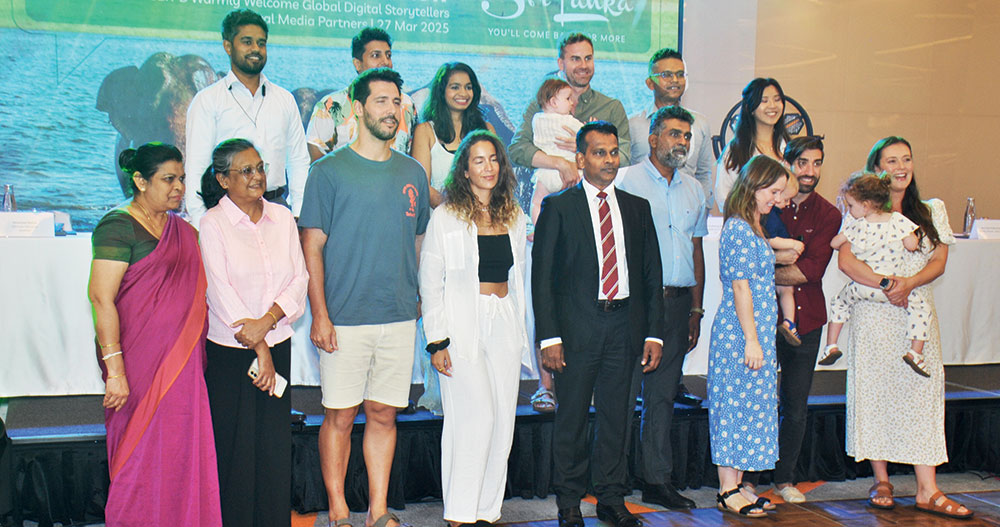
Sri Lanka Tourism Bureau hosted a landmark event at cinnamon Life for an ambitious campaign to spotlight Sri Lanka as a top travel destination. This initiative hosted international influencers and local media to capture the unique charm of Sri Lanka’s destinations. These travel influencers will share thier real time content across platforms like Instragrams Tik Tok and youtube amplifying Sr Lanka as a must visit destination. Many media personal, bloggers and influencers participated in this event which will take them on a tourism travel featuring some of Sri Lanka’s top destination.
Sri Lanka Tourism Promotion Bureau (SLTPB) hosted a landmark event at the Cinnamon Life Hotel, Colombo. The event was led by . Deputy Minister of Tourism, Prof. Ruwan Ranasinghe, with the participation of SLTPB Chairman Buddika Hewawasam, officials, travel influencers and their families, as well as journalists specializing in tourism sector reporting. The gathering set the stage for transformative initiatives aimed at bolstering Sri Lanka’s tourism sector and redefining its global image.
In his opening remarks, Buddika Hewawasam underscored the challenges facing the tourism sector, particularly the seasonal dip in arrivals during the summer months. “The next few years will be the most challenging period for all of us,” Hewawasam stated, emphasizing the need for international collaboration and strategic development. He further highlighted the critical role played by international travel influencers and media professionals in raising awareness of Sri Lanka’s hospitality and inspiring tourists worldwide to visit.
- Dileep Mudadeniya
- Deputy Minister of TourismProfess or Dr Ruwan Ranasinghe
- Guests
The Deputy Minister of Tourism, Prof. Ruwan Ranasinghe, detailed the innovative nature of the campaign and its importance in showcasing Sri Lanka’s rich heritage, natural beauty, and diverse travel experiences to mainstream and emerging tourism markets.
During the event, several prominent travel influencers shared their thoughts about Sri Lanka’s uniqueness as a destination. They highlighted that Sri Lanka is a country where travellers don’t need to worry about finding incredible experiences—nature has already done the hard work. The influencers remarked on Sri Lanka’s unparalleled diversity, noting that it is possible to experience a range of climates within just a few hours by travelling to different parts of the island. From sun-soaked beaches to misty highlands, and from lush forests to cultural treasures, Sri Lanka offers a world of adventures in a compact and accessible setting.
In comparison to destinations like Bali, which some influencers noted as overcrowded, Sri Lanka stands out with stable and balanced tourism activities. The event attendees were thrilled by the country’s warm hospitality, authentic DDirector cuisine with an impressive variety, long history, and rich culture. These qualities make Sri Lanka not only inviting but genuinely unforgettable for visitors.
The travel influencers in attendance expressed strong confidence in their ability to share this powerful message with the world. They were determined to shape international travel trends by showcasing Sri Lanka’s unique appeal, while also helping to attract new types of guests. The influencers represented a diverse range of travel segments, including family travellers, solo female travellers, honeymooners, and adventure seekers. Their efforts were supported by Sri Lanka Tourism officials and journalists representing both local and international media agencies.
The ‘Sri Lanka, A Story for Every Season’ campaign represents SLTPB’s first large-scale effort to boost summer travel through digital storytelling and influencer collaboration.
Featuring a curated destination familiarization tour, the campaign will spotlight wildlife safaris, cultural heritage, spiritual pilgrimage sites, scenic landscapes, and adventure tourism. Influencers will produce high-impact content for platforms like Instagram, YouTube, and Facebook, reaching over 2.2 million travel enthusiasts globally.
Sri Lanka Tourism shared impressive winter peak season results, with international arrivals reaching 665,295 by March 23, 2025—a marked increase compared to the previous year. These figures illustrate the sector’s potential for growth, and the campaign aims to sustain momentum throughout the summer months.
The event was a call to action for stakeholders to unite in elevating Sri Lanka’s global tourism appeal. With plans to generate over LKR 32 million worth of media coverage and connect with diverse travel segments, the campaign underscores Sri Lanka’s commitment to redefining itself as a leading destination for year-round travel.
By Zanita Careem
Pix by Darmasena Welipitiya
-

 Business5 days ago
Business5 days agoColombo Coffee wins coveted management awards
-

 Business7 days ago
Business7 days agoDaraz Sri Lanka ushers in the New Year with 4.4 Avurudu Wasi Pro Max – Sri Lanka’s biggest online Avurudu sale
-

 Features6 days ago
Features6 days agoStarlink in the Global South
-

 Business7 days ago
Business7 days agoNew SL Sovereign Bonds win foreign investor confidence
-

 Features3 days ago
Features3 days agoSri Lanka’s Foreign Policy amid Geopolitical Transformations: 1990-2024 – Part III
-

 Features6 days ago
Features6 days agoModi’s Sri Lanka Sojourn
-

 Midweek Review3 days ago
Midweek Review3 days agoInequality is killing the Middle Class
-

 Features5 days ago
Features5 days agoSri Lanka’s Foreign Policy amid Geopolitical Transformations: 1990-2024 – Part I






